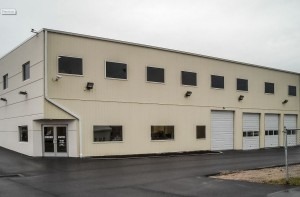Warehouse And Industrial Buildings: A Place for Your Assembly Line
 If you’re like me, you can easily lose an afternoon watching those “How Do They Make That?” shows that take you on tours of factories where anything from guitars to corrugated cardboard to salt water taffies are made. The assembly line, made famous by Henry Ford and largely the reason for our country’s prominence in manufacturing in the early twentieth century, is both fascinating and beautiful to watch in action, with both people and machines acting in seamless tandem to take raw materials on their journey to finished product. It is an intricate balance that keeps it all moving, yet none of it would be possible if not for one important ingredient: space.
If you’re like me, you can easily lose an afternoon watching those “How Do They Make That?” shows that take you on tours of factories where anything from guitars to corrugated cardboard to salt water taffies are made. The assembly line, made famous by Henry Ford and largely the reason for our country’s prominence in manufacturing in the early twentieth century, is both fascinating and beautiful to watch in action, with both people and machines acting in seamless tandem to take raw materials on their journey to finished product. It is an intricate balance that keeps it all moving, yet none of it would be possible if not for one important ingredient: space.
As an experienced post frame commercial builder, here are a few considerations we always bear in mind when designing a new structure to house an assembly line.
ROOM TO MOVE
Take a moment to picture one of those assembly plants in your mind, and the first thing likely to come to mind is an endless ribbon of conveyor belts moving partially-built product from one part of the factory to another, through long ovens or a series of proofing machines, with timing being a critical factor. For it all to perform in the clockwork fashion in which it must, there needs to be plenty of open space in which those belts can sprawl.
SPACE IS AVAILABLE
The pole barn structure, or post-frame style building, is an ideal choice when it comes to choosing the type of structure you want to house your company’s assembly line. Where other building types require load bearing walls or internal framing to maintain structural integrity, a pole barn’s strength is found in its outer frame. Think of one of the most structurally sound shapes in the history of construction: the arch. Once built, an arch can withstand tremendous external force without buckling because the load weight is delivered through the legs of the arch directly into the ground.
Post-frame construction is, essentially, a series of arch-like units connected with horizontal girding. Load forces placed on the building are delivered from the upper cross beams or trusses to the “legs,” which in this case would be the posts delineating the outer frame. Those posts in turn divert that load force into the ground, and the structure remains strong. Stringing together several of these posts-and-truss units allows construction of a building with an open, spacious interior without sacrificing structural integrity or durability.
THE RIGHT CHOICE?
Turn-around time on post-frame construction means that such a building can be completed in a relatively short amount of time, and at a cost you may find friendlier to your budget than some other types of buildings – both pleasing qualities for any business. If you are looking at the need for a building to house an assembly line for product manufacturing, talk with us here at Conestoga Buildings about how a post-frame structure might be the best option to suit your needs. Contact us today to get started!
